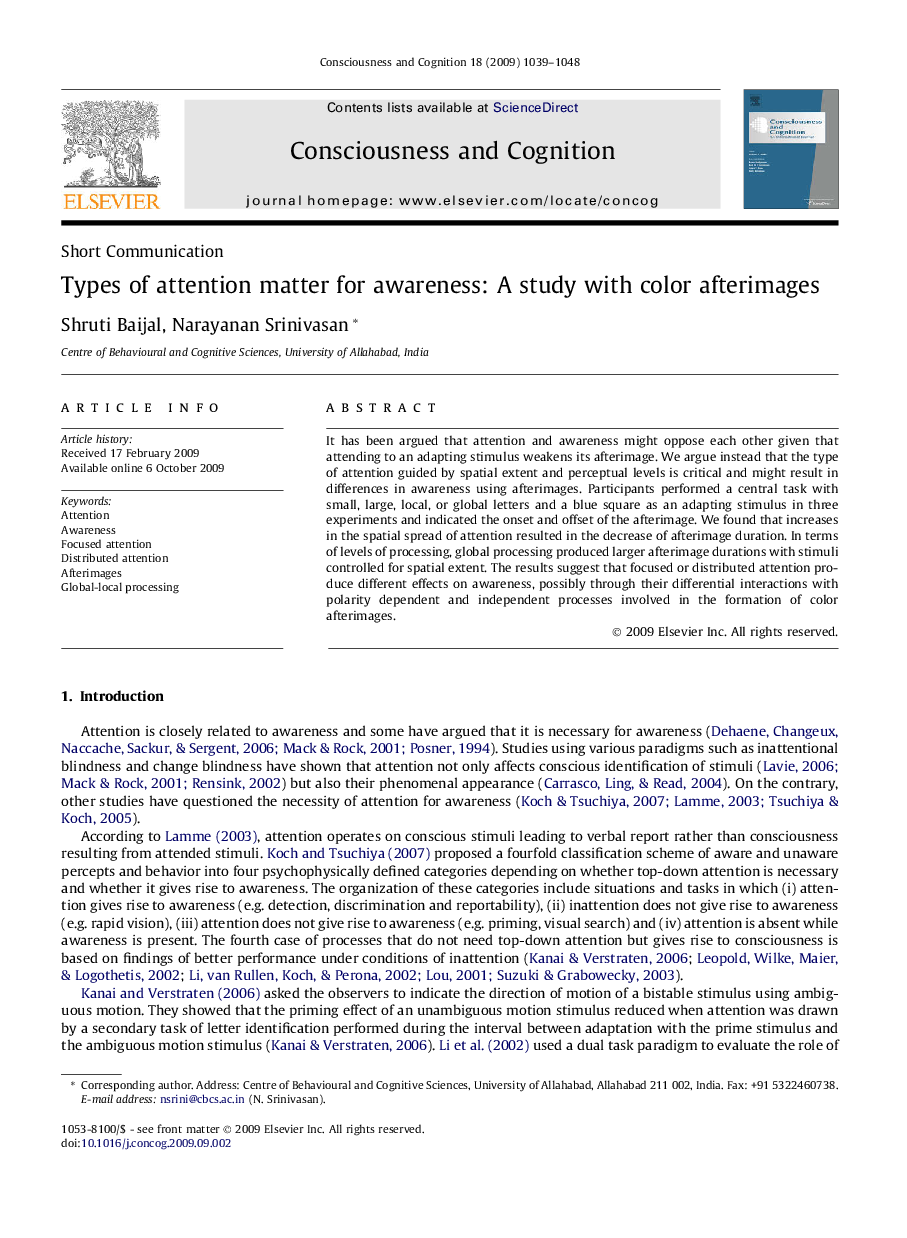| Article ID | Journal | Published Year | Pages | File Type |
|---|---|---|---|---|
| 10458748 | Consciousness and Cognition | 2009 | 10 Pages |
Abstract
It has been argued that attention and awareness might oppose each other given that attending to an adapting stimulus weakens its afterimage. We argue instead that the type of attention guided by spatial extent and perceptual levels is critical and might result in differences in awareness using afterimages. Participants performed a central task with small, large, local, or global letters and a blue square as an adapting stimulus in three experiments and indicated the onset and offset of the afterimage. We found that increases in the spatial spread of attention resulted in the decrease of afterimage duration. In terms of levels of processing, global processing produced larger afterimage durations with stimuli controlled for spatial extent. The results suggest that focused or distributed attention produce different effects on awareness, possibly through their differential interactions with polarity dependent and independent processes involved in the formation of color afterimages.
Related Topics
Life Sciences
Neuroscience
Cognitive Neuroscience
Authors
Shruti Baijal, Narayanan Srinivasan,
